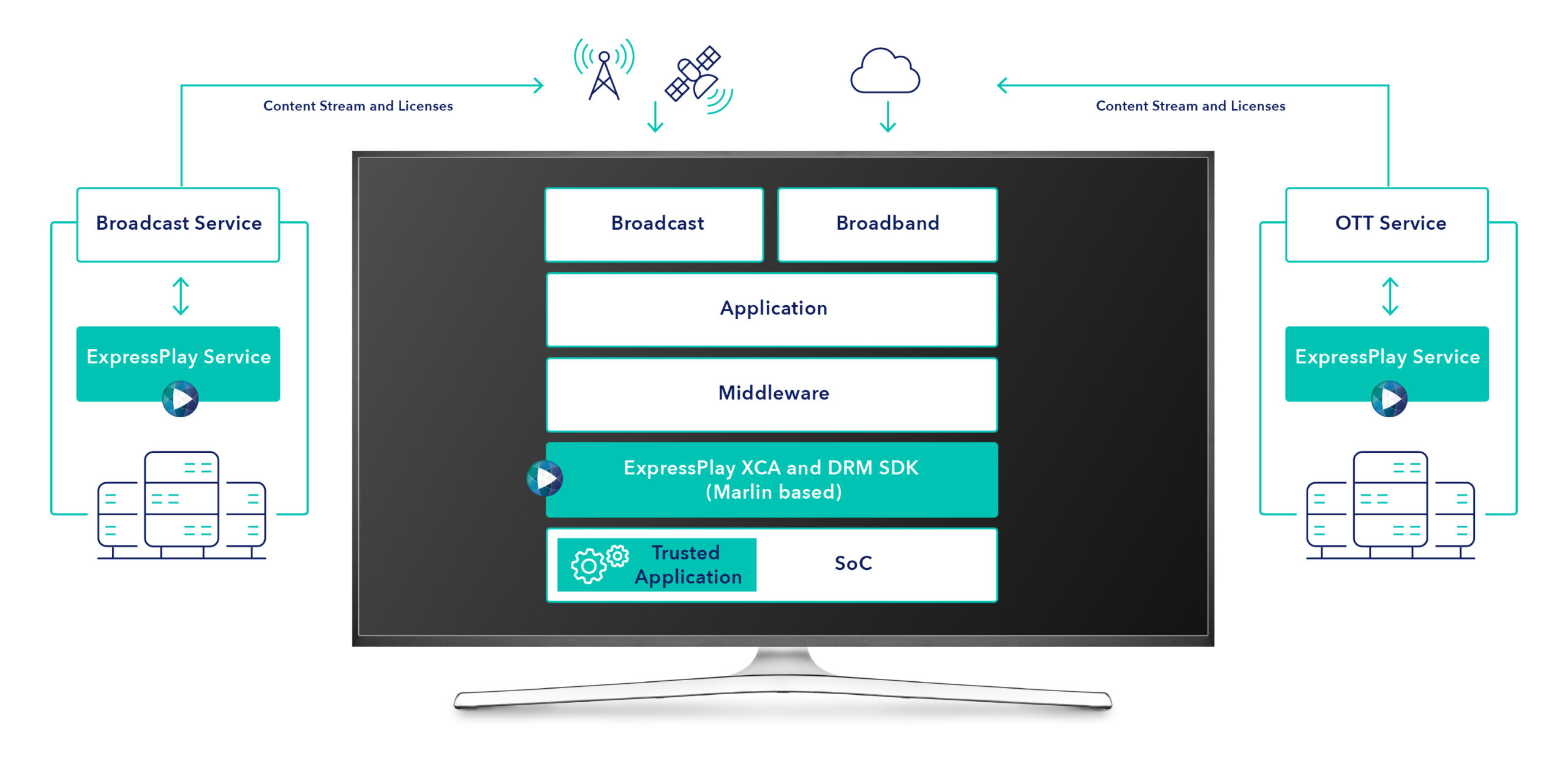Even before the COVID-19 pandemic struck, we were witnessing how pure over-the-top (OTT) video streaming services from operators such as Netflix and Hulu spearheaded the golden age of streaming entertainment. In 2020-2021, with people spending more time at home than ever, the video streaming services growth accelerated further.
The rapid growth of video streaming services and digital entertainment has led to significant cord-cutting as viewers shift their television and entertainment spending from traditional pay-TV services offered by cable and satellite operators to streaming subscriptions that deliver content to all kinds of authorized consumer devices, whether at home or on-the-go. In response, legacy pay-TV operators are gradually shifting to a hybrid distribution model by including streaming services alongside cable and satellite broadcasts. That shift in turn leads to the need for truly converged broadcast-OTT security.
In this hyper-competitive market, traditional broadcasters face tighter margins. Reducing the total cost of ownership (TCO) is not just good business practice but essential for survival. This home entertainment competition goes beyond content creators and distributors since it’s also affecting TV set original equipment manufacturers (OEMs). Everyone is looking for an edge in terms of what they can offer while also minimizing costs to stay competitive.
The problems and potential of content protection technology
One potential method for achieving lower TCO is through the application of converged broadcast-OTT content protection technologies. However, considering that the rise in content piracy costs the industry over $50 billion per year, it’s obvious that cutting back on the quality of content protection technology isn’t an option.
For several decades, the most common content protection technology was associated with set-top boxes (STBs) that decrypted cable and satellite broadcasts for those who had paid their subscription. These are known as conditional access systems (CAS). Although these legacy technologies are gradually becoming outdated and will eventually need to be replaced, they’re still forming a considerable part of the content protection technology stack of traditional pay-TV operators, and maintaining backwards compatibility is important. Thus there is a need to support both traditional broadcast services and OTT services.
The major shortcomings with traditional CA systems is that they are costly, both to acquire and to operate. Yet they are still considered necessary tools for broadcast TV content protection. They can also slow down the time-to-market for urgent new services and create vendor lock-in issues, both for broadcasters and device manufacturers. However, it doesn’t have to be like that.
As the market transitions to a widely diversified distribution model, flexibility is key. Fortunately, hybrid strategies that embrace both traditional broadcast models and streaming services can allow for greater security, flexibility in vendor management, and faster time to market. If operators also take advantage of cloud-based content protection services with pay-as-you-go models, the goal to lower the TCO, by reducing both CAPEX and OPEX costs, becomes attainable.
Six advantages of direct-to-TV broadcast security
Content protection technology and content protection systems are essential for both TV OEMs and broadcasters since without it, studios won’t agree to license their content. Yet, deploying such technology may present significant financial and business challenges. All pay-TV operators want to reduce operating costs while preparing for a transition to more flexible cloud-based services. Here are some of the core objectives with direct-to-TV broadcasting and converged content protection technology:
- Cost savings: Operators can lower their total cost of ownership (TCO) since there is no need to subsidize the STBs or incur costly “truck rolls.” For consumers, there is no need to purchase or rent an STB or CA Module (CAM, like CI+). Everybody wins.
- Broadcast TV and OTT streaming convergence: For many broadcasters, it is not feasible to simply switch to a streaming-only distribution model for distributing protected video content. As such, any potential content protection technology will also need to function on current STBs and CAMs as they move towards a converged broadcasting-OTT security approach.
- Distribution flexibility: Modern content protection needs to be deployed across all distribution modes, such as broadcasting, adaptive streaming, multicasting, offline playback, device-to-device side loading, and time-shift applications.
- Easy API integration: Any converged broadcast-OTT security deployment needs to be easily integrated alongside the broadcaster’s current subscriber management and content management systems, through a well-defined API.
- Accelerated certification: Using a modern and converged content security solution, in combination with client-device self-certification, accelerates service providers’ time to market.
- Improving consumer choice: It had been standard practice for STBs to be locked down by specific CAS vendor technology. The optimal scenario is a unified content protection technology that can cater to all broadcasters. Such a scenario lets the consumers make that choice as they purchase a smart TV and select a service provider with just a click of the remote. No more waiting for a cable operator to ship a box and or send a support engineer to install it.
How ExpressPlay XCA can help
Where do you find a vendor that can satisfy the above requirements with a converged content protection solution? Fortunately, Intertrust’s ExpressPlay XCA, built on the long established Marlin DRM engine, can help.
ExpressPlay XCA brings together otherwise siloed conditional access and digital rights management (DRM) systems to create a converged security solution for broadcasters and device manufacturers. It provides both superior security and flexibility for hybrid distribution models.
Intertrust has pioneered cloud-based content protection services for more than 10 years, securing some 2 billion endpoints worldwide for operators like Disney+ Hotstar, SonyLIV India, HD+ Germany, Sky NZ, YouView, and many more.
Intertrust ExpressPlay XCA is a cloud-based broadcast security solution for DVB and IPTV networks. It enables broadcasting to STBs, and directly to smart TVs without requiring STBs/CAMs. In fact, ExpressPlay XCA was designed for direct-to-TV broadcasting, which will enable you to reach additional viewers via direct-to-TV broadcasting without STBs/CAMs. DVB, IPTV and OTT services are processed in a similar manner.
The security client is integrated into chipsets with advanced security in TV sets from Hisense, Sony and Vestel (a Turkish TV set OEM that produces products for 150 TV brands). This pre-integration enables fast time to market for both existing and new operators. ExpressPlay XCA allows you to reduce the cost of service delivery, whether to STBs or direct-to-TV broadcasting without STBs/CAMs. Read our case study to learn how HD+ Germany has successfully implemented ExpressPlay XCA without STBs/CAMs.

Our global reach minimizes latency and ensures maximum scalability for viewer peak-bursts. ExpressPlay’s cloud-based deployment and global customer base that shares resources ensures the lowest TCO in today’s market. Hence there is no need to incur the high costs of a permanently over-provisioned on-prem system.
ExpressPlay can dramatically reduce the cost of your DVB and IPTV services delivery compared to legacy on-prem server-based conditional access systems. To find out just how ExpressPlay XCA can reduce costs while improving both content protection and distribution, download the whitepaper here.








